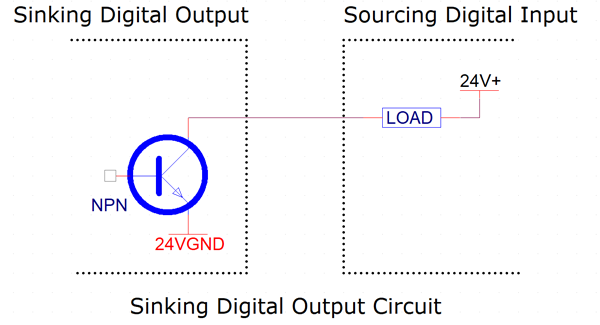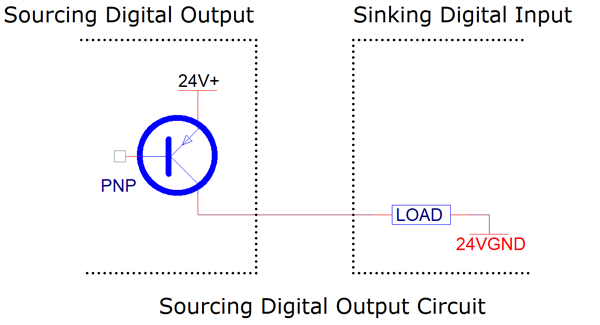Current source and current sink are two terms that are important to understand, when you choose the type of digital input or output module you want to use for you PLC system. Current source or current sink can only direct current in one direction, which means that the circuit will not operate if you connect it the wrong way. A PLC I/O circuit needs one terminal for current to enter, and another for current to exit. Two terminals are associated with every I/O point.
Source current is the ability of the digital output/input port to supply current. Sink current is the ability of the port to receive current.
When you have a simple circuit where a digital input connects to a digital output, you need three components; a voltage source, a ground, and a load. A sourcing digital I/O provides the voltage, a sinking I/O the ground, and the digital input provides the load.
This means that the input and output works in pairs:
Digital source output – Digital sink input
Digital sink output – Digital source input
Figure 1 shows a sinking digital output that is connected to a sourcing digital input.
In this circuit, the load is pulled to ground because of the sinking digital input provided.

Figure 2 shows a sourcing digital output that is connected to a sinking digital input.
In this circuit, the load is pulled up to receive voltage because the sourcing digital input has been provided.





